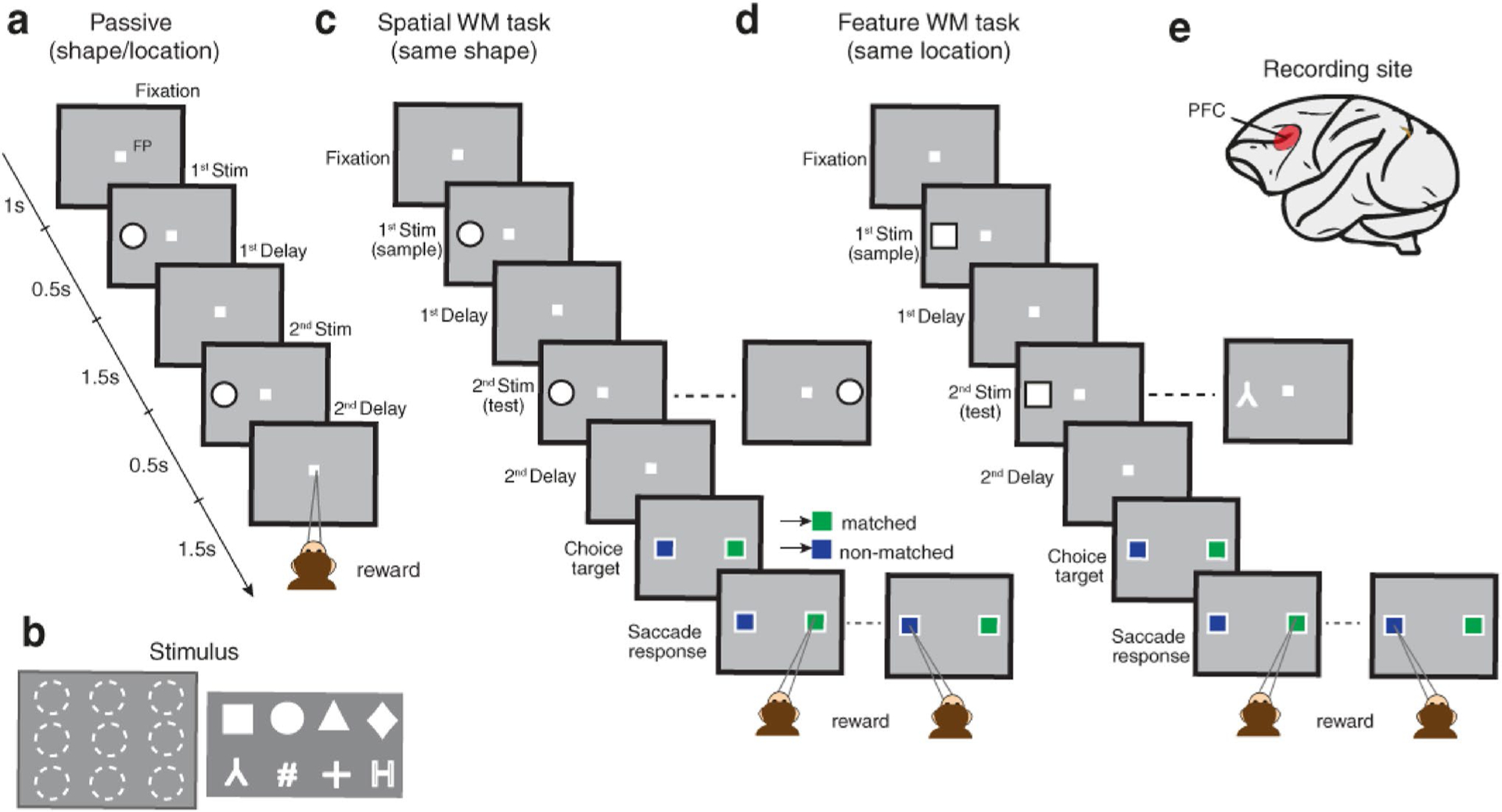Fig. 1.

Behavioral passive and WM tasks. a In the passive task, two sequential stimuli were followed by two delay periods. Stimuli could be match or non-match relative to the spatial location or shape feature aspect. Regardless of stimuli properties, animals needed to maintain their gaze on the fixation point to receive a drop of juice reward. b Spatial set consisted of nine locations (left panel) and feature set included of eight different shapes (right panel). c, d In the WM tasks, monkeys were trained for making a decision regarding the match/non-match status between sample and test stimuli. In the spatial WM task, the shape of sample and test stimuli were identical and monkeys should identify the match or non-match status of their location. In contrast, in the feature WM task, the location of stimuli remained the same and monkeys should identify the matching status based on their shapes. The WM tasks included two additional phases in comparison to the passive task; choice target and saccade response epochs. e The prefrontal cortex (red region) as the target recording area
